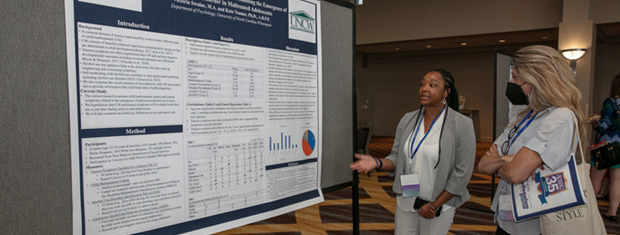




The APSAC Advisor is a peer reviewed quarterly news journal for professionals in the field of child abuse and neglect.
The APSAC Advisor provides succinct, data-based, practice-oriented articles that keep interdisciplinary professionals
informed of the latest developments in policy and practice the field of child maltreatment. It is designed to highlight
best practices in the field and publish original articles and current information about child maltreatment for professionals
from a variety of backgrounds including medicine, law, law enforcement, social work, child protective services, psychology,
public health and prevention in the U.S.
 If you wish to learn more about submitting an article to the Advisor, please click here.
If you wish to learn more about submitting an article to the Advisor, please click here.
This library contains Advisor issues dating back to the first issue in 1988. The most recent issue appears at the top.
Scroll down to select past issues by year and issue number. Once a publication appears in the box, you
can use the Enlarge button to open the document in a new window or tab (depending on how your browser is set up).
This will allow you to view the document with larger print.
To print a document, first use the Enlarge button to open the document in a new window or tab. Then use your browser's Print command.
To return here from a new tab, close the tab. To return from a new window, click your browser's Back button.
In the listing below, click on a year and issue number to see the articles in that publication.
2016 Number 1
Child Advocacy Centers in New York were surveyed to examine practice with respect to administering mental health screenings of child clients. Results identified several barriers to the fulfillment of this important mandate, most commonly that families refused assessments and because children were deemed too young for the available measures. Recommendations for improved CAC practice are offered.
What’s New and Who’s Doing It: Implementing an Agencywide Resiliency Program
The Organizational Resiliency Model was designed to help child abuse organizations address secondary traumatic stress in their staff. The model is a strengths-based approach that includes five core elements: Self-Knowledge, Sense of Hope, Healthy Coping, Strong Relationships, and Personal Perspective and Meaning. This article describes each element and its research basis, along with an overview of the model in practice at the Baltimore Child Abuse Center.
In January 2016, after two years of collaborative work on the contested issue of Allegations of Child Maltreatment and Intimate Partner Violence in Divorce - Parental Relationship Dissolution, the APSAC Board of Directors voted unanimously to accept a position paper. The paper, summarized here, provides guidance for professionals about intervention in these cases, addresses the issue of parental alienation, and suggests future directions with regard to these difficult cases.
At Issue: The Case for Calling it Peer Victimization and Aggression
In this “At Issue” article, the author argues that, based on research that provides new perspectives on the phenomenon widely known as bullying, child advocacy professionals should shift our consciousness, perception, and language to identify this dynamic as peer victimization and aggression.
APSAC Advisor 28(1): Full Issue